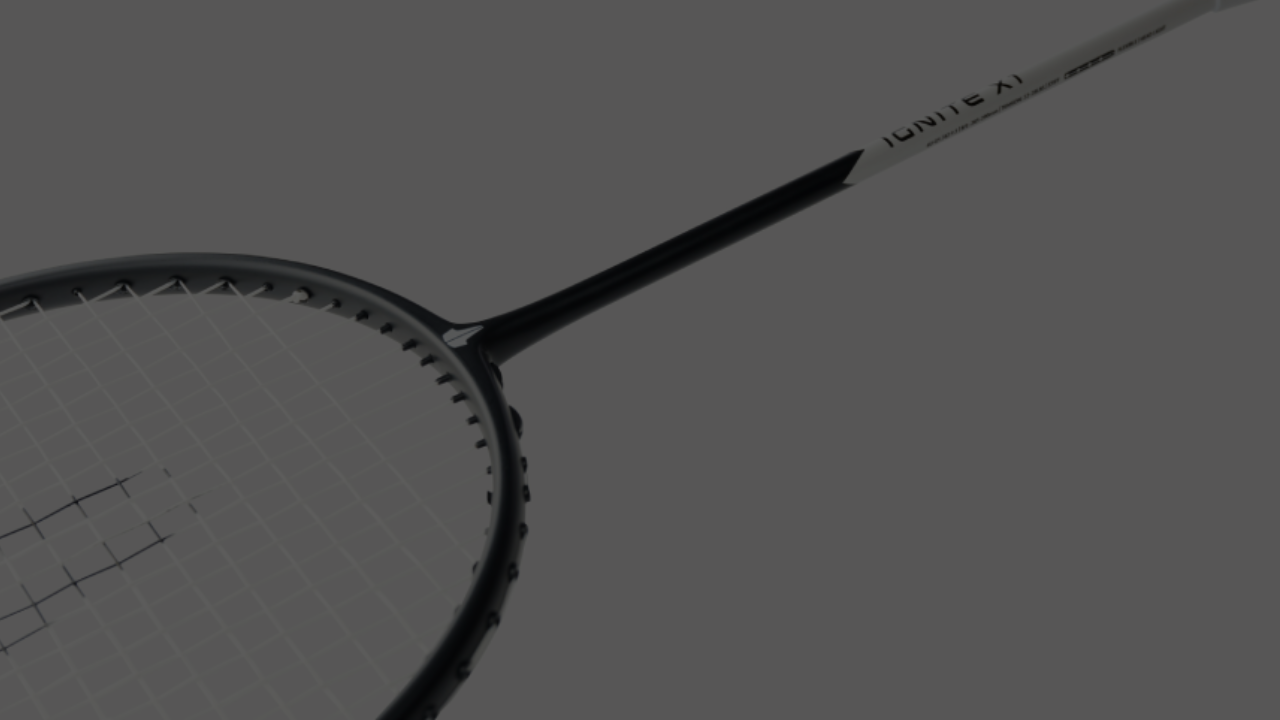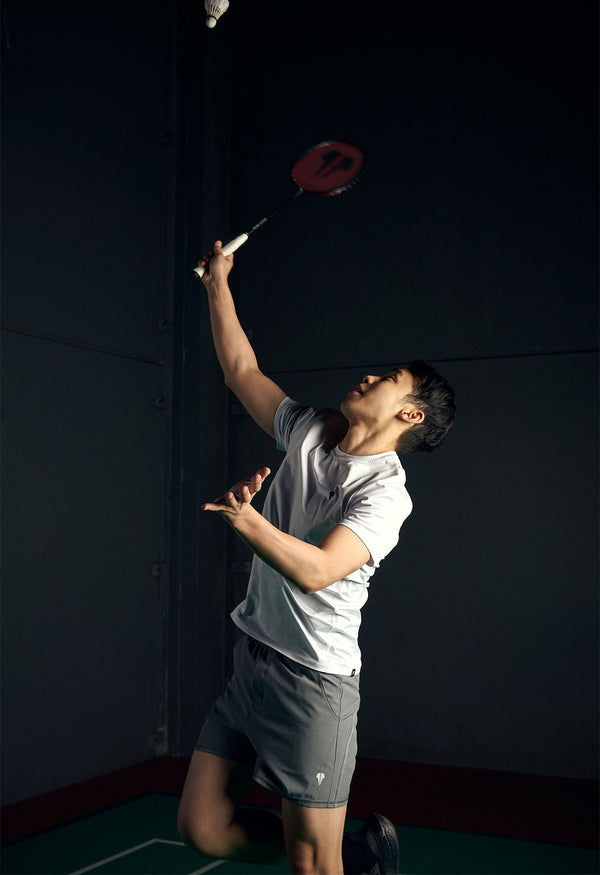Your Cart is Empty

June 26, 2019 5 min read
The evolution of badminton is not defined by a single individual or the racquet that was used. From the early 1960s until now, a multitude of players have stood out from the rest and have slowly changed the gameplay of badminton, transitioning it into that game we see today.
 Glenn Warfe - Former Australian Olympic Badminton Player (Men's Doubles)
Glenn Warfe - Former Australian Olympic Badminton Player (Men's Doubles)Now the argument always stands, between our generation and the previous generation (and between that generation and the generation before them): "who was better?"
Momota or Chong Wei? Chong Wei or Lin Dan? Lin Dan or Taufik? Taufik or Budikusuma? Budikusuma or Yang Yang? And so on. This debate can be continuously rinsed and repeated - each to a degree of bias based on the viewer and fans of each era.
Before the emergence of The Great 4 Kings, badminton was a drastically different game. The pace, power, technique and stamina was not what you see today. Some could argue it is unique to a particular generation, while others would say that every generation is unique. I believe, however, that every generation passes skills to the next, and this has continually evolved and refined badminton into the great sport that it is today.

I do not think that they were the ones that invented these innovative ways to play the game - they just did it better than the rest. As I said, each generation passes something forward.
Let's focus on the techniques and innovative changes that contributed to the evolution of badminton rather than each individual's overall performance:
Number one: The Chisel (aka net tumble)
Among the many Shuttlers that have dominated the net, there is one revered and regarded above all others. Taufik Hidayat, the former world number one Indonesian men’s singles player, adored on social media for his exceptional backhand, is also renowned on the international circuit for his notoriously difficult-to-return net chisels. The basic chiselling method involves a simple inwards “quarter C” shape motion of the racquet that causes the cork to drop and spin rotationally, 360° continually changing positions with the feathered end.
Taufik’s chiselling technique at the time however, was like no other. He could chisel the shuttle such that the cork would continuously face upwards until it was less than two feet off the ground. This meant that it was extremely difficult or impossible for his opponent to re-chisel, or play a lift until the shuttle had almost reached the ground. The shuttle itself did not have the traditional spin but instead rotated fast enough to keep its centre balance, allowing the cork to spin upwards.
Number 2: The Deception
Deception has always been a constant attribute that existed in the badminton game. It was not used for the purposes of show boating, but a genuine skill of mis-direction used to confuse an opponent. Done well, this skill can leave your opponent stranded.
If you YouTube 'badminton deception' you will be bombarded with the many creative and talented players that have fooled their opponents with the most imaginative shots. The man in the centre that truly brought this attribute into the game was the former world number one Danish men’s singles player Peter Gade.
At the time of his era, the game play of “hit hard and fast” was emerging. The power plays in badminton focused on direct movement and aggressive follow ups, and were popular in the Asian circuit. However, the Danish player equalised on this by using deception as an advantage to compete.
There is no way to define how he managed to compile such extraordinary creativity. The variety of Gade's deception was delivered from all corners of the court, ranging from a deceptively fast snap, a hold and push and a double-pump fake that would bemuse the best of the best. On a side note, if you have not seen what deception looks like before the Peter Gade era, please do so and see the difference!
Number 3: The Footwork
Now, I have to admit this goes beyond my era of knowledge. It's literally so old I don’t know it, but I’ve always been told by my father that his generation of badminton was the best. They were the ones that created today’s style and techniques, and to some degree, I believe him.
Prior to me having this discussion with him, I came across something rather interesting, a YouTube video of 1950s badminton… and to my surprise no footwork existed.
These days, footwork is a part of the basics in badminton, and is somewhat common knowledge to all players. But prior to the 1950s, it did not exist.
So who created the badminton footwork? His answers were Tang Xian Hu/Hou Jia Chang. They were Chinese players that developed the chasse footwork and made continuous refinements until they created an economical movement method that focused on conserving energy while delivering optimal speed.
In the more modern day, it was Lee Chong Wei who took badminton footwork to a whole new level.
Number 4: The Jump Smash
The jump smash, probably the most famous shot in badminton is the epitome of offensive play. Such a technique is within the armoury of most of today’s players, but who made this shot so popular? Who made it a technique so exciting, graceful and feared that whenever it occurred in game, where the crowd would cheer and shout?
I introduce to you Lim Swie King.At his peak, this shot itself was given a name of ‘The Kings Smash’. It was a shot like no other. The crowd could feel the ferocity as he leaped, arched his back and unleashed a devastating smash to his opponent.
In his era, jump smashes were limited to only those who possessed the adequate footwork technique. In contrast to the traditional smashing technique, Lim Swie King focused on intercepting in the vertical axis of play by using both legs to jump rather than one. The result was that he could produce adequate height and airtime to intercept the shuttle at the highest point possible. This had allowed him to produce a variety of trajectories and wield a deadly attacking shot.
Do you have a different opinion? Who do you think was the pioneer of world-class badminton?
Main image source: https://badmintondoubles.wordpress.com
Body image source 1: Volant Wear
Video Source 1: https://www.youtube.com/watch?v=ttEkhHGqJNQ
Video Source 2: https://www.youtube.com/watch?v=js7yajZq3fQ
Video Source 3: https://www.youtube.com/watch?v=uVSm4P880-c
Video Source 4: https://www.youtube.com/watch?v=rOqpN40mDMw
Comments will be approved before showing up.

August 20, 2025 2 min read

July 17, 2025 2 min read
Shuttlecocks aren’t cheap, and replacing them constantly stings the wallet. With a little care, though, you can stretch their lifespan and keep your game flying high. Whether you’re using feather or nylon, here’s how to make them last—plus why Volant Badminton’s options are worth your shot.

June 25, 2025 2 min read
Strings wear out—it’s a fact of badminton life. Slack, frayed, or snapped strings kill your shots, so knowing when to restring keeps you sharp. How often depends on your play, and here’s how to figure it out—plus why Volant Badminton’s gear makes it easy.
Be the first to know when a new blog post comes out!
Curated articles, tips and advice, tailored to the sport of badminton.
Sign up and enjoy 10% off your first order.

Join the Volant Community and improve your game!
*Discount code excludes shuttlecocks